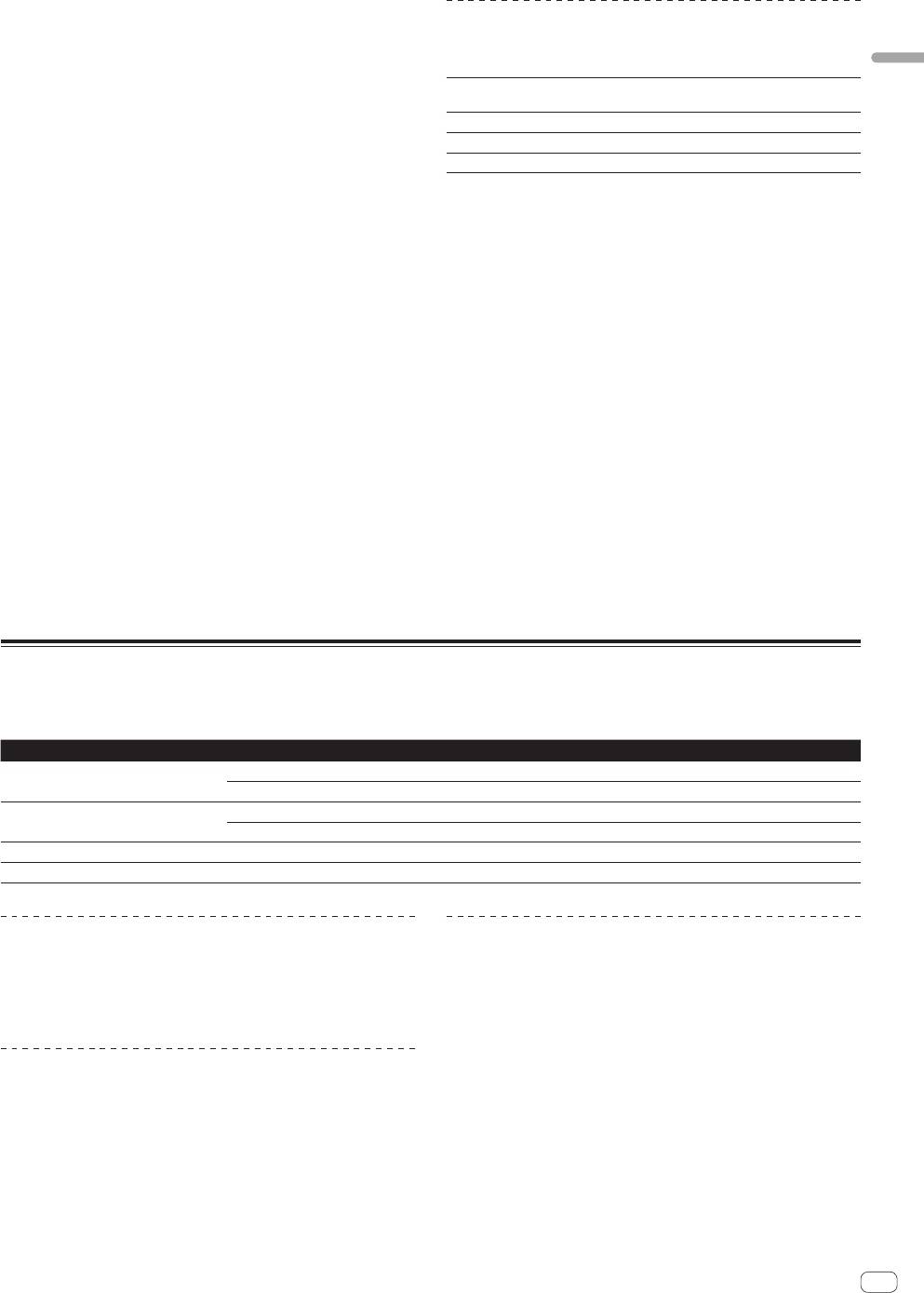
5
En
Before you start
Regarding copy protected CDs
This unit is designed to CD standards. Operation and performance of
discs with standards other than CD standards is not guaranteed.
About playing DualDiscs
A DualDisc is a new two-sided disc, one side of which contains DVD
content — video, audio, etc. — while the other side contains non-DVD
content such as digital audio material.
The non-DVD, audio side of the disc is not compatible with this player.
For more detailed information on the DualDisc specification, please refer
to the disc manufacturer or disc retailer.
About 8 cm discs
8 cm discs cannot be played. Do not mount 8 cm adapters on discs and
play the discs on this unit. The adapter could come off while the disc is
rotating, damaging both the disc and this unit.
CD-TEXT
This unit is compatible with CD-TEXT. Titles, album names and artist
names recorded in CD-TEXT are displayed. When multiple text data is
recorded, the first text data is displayed. The supported character codes
are listed below.
! ASCII
! ISO-8859-1
About USB devices
This unit supports USB mass storage class USB devices (external hard
disks, portable flash memory devices, digital audio players, etc.).
Folder layers
Max. 8 layers (files in folders beyond the 8th layer cannot
be played)
Max. number of folders 999 folders
Max. number of files
10 000 files (999 files for files not managed by rekordbox)
Supported file systems FAT16 and FAT32 (HFS+ and NTFS are not supported.)
USB devices that cannot be used
! Optical disc type devices such as external DVD/CD drives, etc., are
not supported.
!
USB hubs cannot be used.
Cautions on using USB devices
! Some USB devices may not operate properly. Please note that
Pioneer will accept no responsibility whatsoever for loss of data
stored by the user on USB devices or other direct or indirect prob-
lems arising due to connection of USB devices to this unit.
!
If a current larger than the allowable value is detected at this unit’s
USB device insertion slot, it may happen that the [USB STOP]
indicator flashes, the supply of power to the USB device is stopped
and communications are interrupted. To restore normal operation,
disconnect the USB device from this unit. Avoid using USB devices
for which excess currents have been detected. If normal operation is
not restored using the method above (if communications cannot be
established), turn this unit’s power off then back on.
! If the USB device is split into multiple partitions, only the first parti-
tion can be used.
! USB devices equipped with flash card readers may not operate.
! Depending on the USB device you are using, the desired perfor-
mance may not be achieved.
Playable music file formats
This unit supports music files in the formats shown below.
! AAC files on CD-ROMs cannot be played.
! Only up to 99 minutes of AAC files can be played.
Type File extension Compatible formats Bit depth Bit rate Sampling frequency Encoding method
MP3 .mp3
MPEG-1 AUDIO LAYER-3 16 bit 32 kbps to 320 kbps 32 kHz, 44.1 kHz, 48 kHz CBR, VBR
MPEG-2 AUDIO LAYER-3 16 bit 32 kbps to 160 kbps 16 kHz, 22.05 kHz, 24 kHz CBR, VBR
AAC .m4a, .aac and .mp4
MPEG-4 AAC LC 16 bit 16 kbps to 320 kbps 32 kHz, 44.1 kHz, 48 kHz CBR, VBR
MPEG-2 AAC LC 16 bit 16 kbps to 320 kbps 32 kHz, 44.1 kHz, 48 kHz CBR, VBR
WAV .wav WAV 16 bit, 24 bit — 44.1 kHz, 48 kHz Uncompressed PCM
AIFF .aif, .aiff AIFF 16 bit, 24 bit — 44.1 kHz, 48 kHz Uncompressed PCM
About MP3 files
MP3 files include constant bit rate (CBR) and variable bit rate (VBR) files.
Both types can be played on this unit, but the searching speed is slower
for VBR files than for CBR files. To prioritize operability, we recommend
recording files in CBR.
About AAC files
! AAC is the abbreviation of “Advanced Audio Coding”, a basic format
of audio compression technology used for MPEG-2 and MPEG-4.
! The file format and extension of AAC data depends on the applica-
tion used to create the data.
! On this unit, in addition to AAC files encoded with iTunes
®
and with
the extension “.m4a”, files with the extensions “.aac” and “.mp4” files
can also be played. However, AAC files that are copyright-protected,
such as those purchased from the iTunes Store, cannot be played.
Also, depending on the version of iTunes in which the file was
encoded, it may not be possible to play the file.
About ID3 tags
The tag information types which can be registered from a music file are
ID3 tags (v1, v1.1, v2.2.0, v2.3.0, and v2.4.0) or meta tags.


















